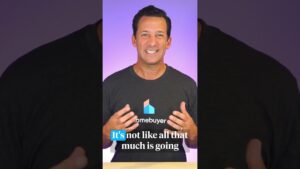Several fees come along with a mortgage. One of the more typical is the loan origination fee charged by your lender for processing and, sometimes, underwriting your loan.
The exact cost of these fees varies from one lender to the next, but they generally clock in at 1% or less of your total loan balance.
To get a feel for what your loan origination fee may be, get pre-approved for your mortgage loan. This will give you a good idea of your total loan costs — both at closing and long-term.
What Are Loan Origination Fees?
A loan origination fee is a charge assessed by a mortgage lender to process your loan. It typically amounts to about 1% of your total loan balance.
Almost all lenders charge origination fees to cover the cost of processing, underwriting, and executing your loan.
These fees can show up as a single origination fee or as several different charges — like an underwriting and processing fee. Origination fees cover a variety of lender-side costs, including things like:
- Verifying your employment and income
- Processing your application and documentation
- Preparing your mortgage documents
- Underwriting your loan
Loan origination fees vary. Your loan amount, type of loan, credit score, and the presence of a co-signer can all impact costs.
Thankfully, mortgage lenders break these fees down on your Loan Estimate, which you’ll receive when you get pre-approved. You’ll also get an updated breakdown of your costs no later than three days before closing day.
When do you pay loan origination fees?
You’ll pay your origination fees at closing as part of your total closing costs.
Closing costs include other fees like:
- Prepaid interest, which covers the interest for the period between closing day and the end of the month.
- Discount points, which allow you to pay an upfront fee to lower your interest rate.
In some cases, lenders may offer credits to help offset some or all of these costs.
Are Loan Origination Fees Negotiable?
Origination fees and many of the lender-side fees are negotiable, so don’t be afraid to ask your lender to reduce yours. Origination fees can be lowered by:
- A simple reduction of the fees by the lender
- The lender giving a credit to offset a portion, or all, of the origination fees
- Taking a higher interest rate to reduce your up-front costs
If you are still left with up-front costs, consider asking the seller to contribute to your closing costs. The odds of receiving seller contributions are market-dependent, so be sure to consult with your real estate agent about this.
Compare quotes from different lenders
Mortgage origination fees, rates, terms, and other fees can vary wildly from one mortgage company to the next. It’s essential to get quotes from at least two or three lenders before deciding who to work with. This will allow you to see a wide range of fees and rates and ultimately determine the best choice for you.
Getting a few extra quotes will also better prepare you for negotiations. When negotiating fees, showing your mortgage expert a quote from another lender is the perfect way to lower your costs.
Read Your Loan Estimate Carefully
Once you choose a lender, be sure to read your Loan Estimate carefully. It outlines all the fees you’ll be expected to pay at closing, including the origination fee. Though this fee covers many services associated with your loan, they’re often negotiable. Never be afraid to ask your lender for a reduction or credit to offset your costs — especially if you’re a first-time home buyer.
Loan origination fees are common costs that cover your lender’s work to process your loan. Origination fees are typically just one percent of your loan balance and they’re often negotiable. Talk with your mortgage lender about their origination fee and plan to pay this extra closing cost before you move in.

 Buying Soon
Buying Soon Just Starting
Just Starting Just Starting
Just Starting Just Starting
Just Starting Just Starting
Just Starting Just Starting
Just Starting
 Research
Research Research
Research Research
Research Research
Research Research
Research Research
Research Research
Research Research
Research Research
Research Research
Research

























 NMLS #423065 Member FDIC. Equal Housing Lender.
NMLS #423065 Member FDIC. Equal Housing Lender.

